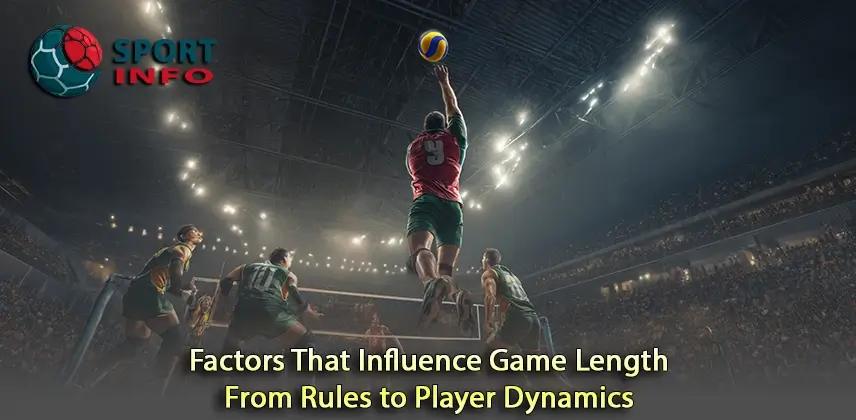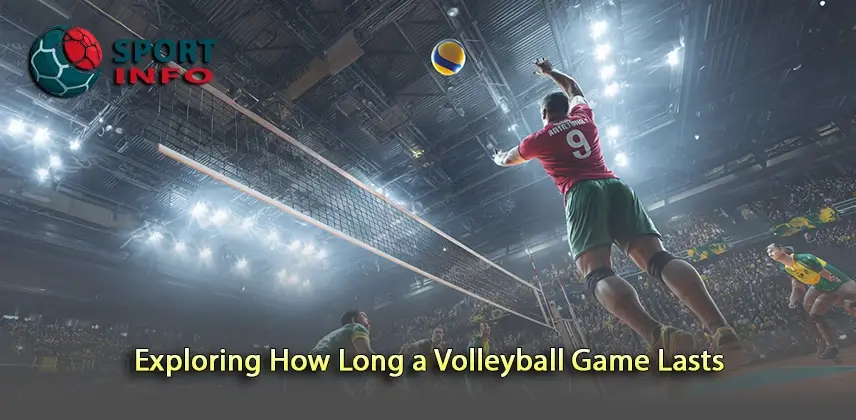If you’ve ever wondered how long is a volleyball game, you’re not alone. The duration varies widely depending on the level of play, the format of the match, and specific rules governing the event. Whether you’re a player, coach, or fan, gaining insight into what determines the length of a volleyball game can enhance your viewing experience and preparation for participation.
The Standard Duration of Competitive Volleyball Matches
Volleyball games can feel fast-paced, but the actual length of a match is affected by many variables, making it tricky to provide a definitive answer. The standard timeline of a competitive match depends on whether it is played indoors or on the beach, whether it follows a best-of-five sets format or best-of-three, and how evenly matched the teams are.
Indoor Volleyball Match Formats and Typical Length
Indoor volleyball, as played in professional leagues and international competitions, typically follows a best-of-five sets format. A team must win three sets to claim the match. The first four sets are played to 25 points and must be won by at least a two-point margin, while the fifth set, if necessary, is played to 15 points with the same win-by-two rule.
Matches often last between 60 to 90 minutes, but can extend beyond two hours, especially when teams are evenly matched, and sets become closely contested.
The variability occurs because there’s no game clock; the play continues until a team reaches the required points with a two-point advantage. During rallies, timeouts, substitutions, and breaks between sets also influence the total duration.
Beach Volleyball Game Timing and Its Variability
Contrasting with indoor volleyball, beach volleyball typically uses a best-of-three sets format. The first two sets are played to 21 points, and the third deciding set to 15 points, all requiring a two-point margin to win.
Beach volleyball games tend to be shorter on average, usually around 30 to 60 minutes. The natural outdoor environment, shorter set lengths, and fewer players per side (2 vs 6) contribute to quicker games. However, weather conditions or highly competitive matches can extend playtime.
Impact of Level of Play and Competitive Setting
The level of the players dramatically affects the game’s length. Professional matches tend to be longer due to strategic play, longer rallies, and the use of timeouts and substitutions. Amateur or recreational games might last less time but are more variable due to skill disparities and less structured pacing.
The competitive setting (tournaments, regular-season, playoffs) also influences timing. For instance, tiebreak sets in playoffs can create suspense and add minutes to the overall match length, while round-robin group matches may be shorter due to time constraints.
Factors That Influence Game Length – From Rules to Player Dynamics

Before diving into deeper details about game length, it’s crucial to consider several factors that directly impact how long is a volleyball game in different contexts.
Team Skill Level and Gameplay Style
The quality of teams and their playing style dramatically changes the duration of a volleyball match. Power hitters and aggressive teams can shorten rallies by scoring quickly, whereas teams focusing on defense and long rallies tend to extend games.
Advanced teams often employ tactical maneuvers, including strategic timeouts and substitutions, which slow down the match’s overall pace but can increase the game’s duration due to rest periods and regrouping.
Rule Variations Across Volleyball Leagues
Regulations vary between leagues, such as FIVB (international), NCAA (college), or recreational rules. For example, some leagues may use rally scoring throughout, while others might play with side-out scoring, which leads to longer matches because points can only be won when serving.
Timeout allowances and the allowance for player substitutions affect the time breaks within the game. Some leagues permit more frequent timeouts or longer breaks, which in turn can increase the game length.
Environment and External Factors
Conditions such as court type, weather for beach volleyball, and even the officiating crew’s speed can influence match time. Outdoor matches may be interrupted by weather elements, slowing gameplay, while indoor conditions tend to be more controlled.
Player stamina and injury timeouts also add unpredictability to match length, often leading to extended game duration unexpectedly.
Comparative Analysis of Volleyball Game Length Across Formats and Sports
To better comprehend how long is a volleyball game compared to other sports, and between volleyball formats themselves, a comparison clarifies the context and expectations for viewers and participants alike.
| Format/Type | Typical Length | Sets Played | Points per Set | Key Influencing Factors |
|---|---|---|---|---|
| Indoor Volleyball (FIVB) | 60-90 minutes (up to 2 hrs) | Best of 5 | 25 points (15 in 5th) | Team skill, tight sets, timeouts |
| Beach Volleyball | 30-60 minutes | Best of 3 | 21 points (15 in 3rd) | Weather, outdoor conditions, team size |
| Recreational Volleyball | 45-75 minutes | Varies | Varies | Skill disparities, informal rules |
| Other Team Sports | ||||
| Basketball | 48 minutes (game clock) | 4 quarters | 12 minutes each | Game clock, shot clock |
| Soccer | 90 minutes (game clock) | 2 halves | 45 minutes each | Stoppage time, injury time |
| Tennis (best of 3 sets) | 1.5 – 3 hours | Varies | Advantage scoring | No game clock, long rallies |
Differences Highlighted Between Indoor and Beach Volleyball
Indoor volleyball’s longer matches are influenced largely by the extended best-of-five format and the number of players, allowing more strategic substitutions. Beach volleyball’s matches likely end faster due to fewer sets and players, yet requires high stamina due to playing conditions.
Comparing Volleyball Duration to Other Popular Team Sports
Unlike basketball and soccer, which operate on strict clocks, volleyball has no countdown timer during play, making game duration less predictable. Tennis shares similarities with volleyball, as matches continue until a player meets the required points or games with a two-point lead, which can lengthen or shorten match time unpredictably.
This comparison helps contextualize volleyball’s unique timing element and what factors fans and players must anticipate.
Practical Tips for Managing and Estimating Volleyball Game Duration
Whether you’re organizing a volleyball event, coaching a team, or planning a viewing schedule, understanding how long an average volleyball game lasts is useful. Here, you’ll find some practical advice for estimating and managing game length effectively.
Scheduling Volleyball Matches for Events and Tournaments
When planning tournaments, it’s crucial to allocate buffer time around each scheduled match. Since indoor matches can last anywhere from 60 minutes to over two hours, scheduling at least 90 minutes for each match is wise for competitive play to avoid overrunning subsequent games.
For recreational or shorter formats like beach volleyball, 45 to 60 minutes per game is typically sufficient. Make sure to include warm-up periods, breaks, and potential delays due to weather or injuries.
Coaching Strategies to Influence Game Duration
Coaches can slightly influence game pace through tactical decisions — opting for faster serving, reducing time between plays, or minimizing excessive substitutions. However, focusing solely on shortening game time isn’t ideal; the priority should be maximizing player performance and strategic effectiveness.
Advisors should educate players to maintain their energy for possibly long matches and prepare mentally for the variability in game length, especially in tight contests.
Personal Preparation for Players and Spectators
Players should anticipate variability and be physically prepared for matches that might extend beyond the predicted duration. Spectators planning to watch volleyball should allocate extra time for matches, especially with intense contests or tournament playoffs.
Maintaining patience during games where lengthy rallies or frequent stoppages occur can make observing the sport more enjoyable and less stressful.
Frequently Asked Questions About How Long Is a Volleyball Game
How long does a professional volleyball match usually last?
Professional volleyball matches generally last between 60 and 90 minutes but can extend to over two hours in closely contested five-set matches.
Does beach volleyball have shorter games than indoor volleyball?
Yes, beach volleyball tends to have shorter games, usually lasting 30-60 minutes, due to fewer sets and players and the outdoor environment.
Are volleyball game lengths predictable like other sports?
No, volleyball games do not have a game clock during active play, so match lengths are quite variable and depend on the flow and scoring pace.
What factors can make a volleyball game last longer?
Factors such as closely matched teams, long rallies, multiple timeouts, substitutions, and injury delays all contribute to longer volleyball games.
How can I estimate how long a recreational volleyball game will take?
For recreational volleyball, expect anywhere from 45 to 75 minutes, depending on the number of sets, skill level, and rules used.
Conclusion
Understanding the question how long is a volleyball game reveals that the answer is nuanced, depending on several factors like the format (indoor versus beach), level of competition, team skill, game rules, and external influences. Indoor volleyball matches tend to last longer due to more extended formats, whereas beach volleyball games are generally shorter but demanding in their own way. Unlike sports governed by strict time limits, volleyball’s point-based scoring and lack of a game clock create unpredictability in match duration, requiring players, coaches, and fans to be flexible and prepared for varying lengths of play. Armed with this knowledge, you can better plan your game strategies, tournament schedules, or viewing habits to fully enjoy this dynamic and exciting sport.

